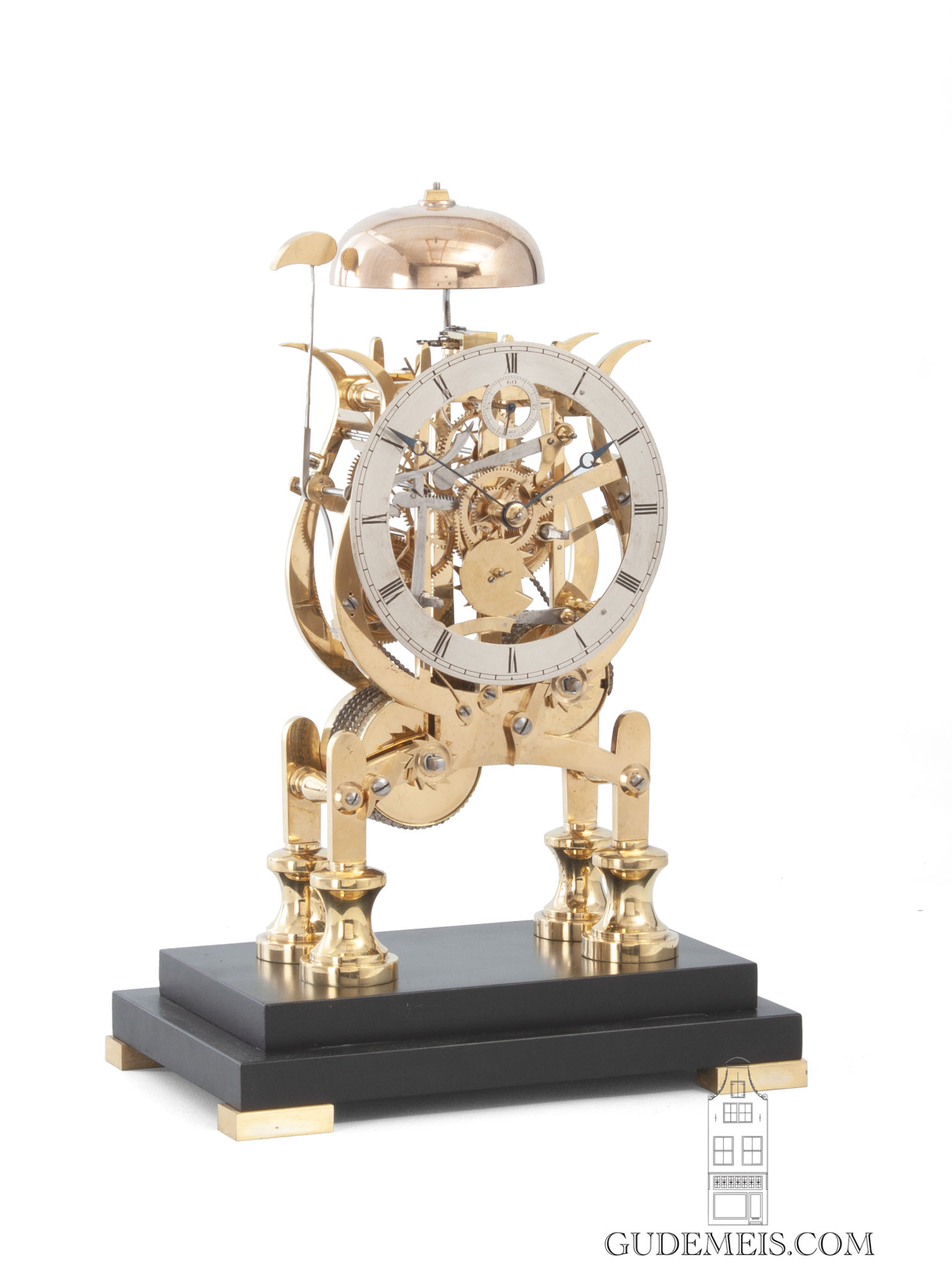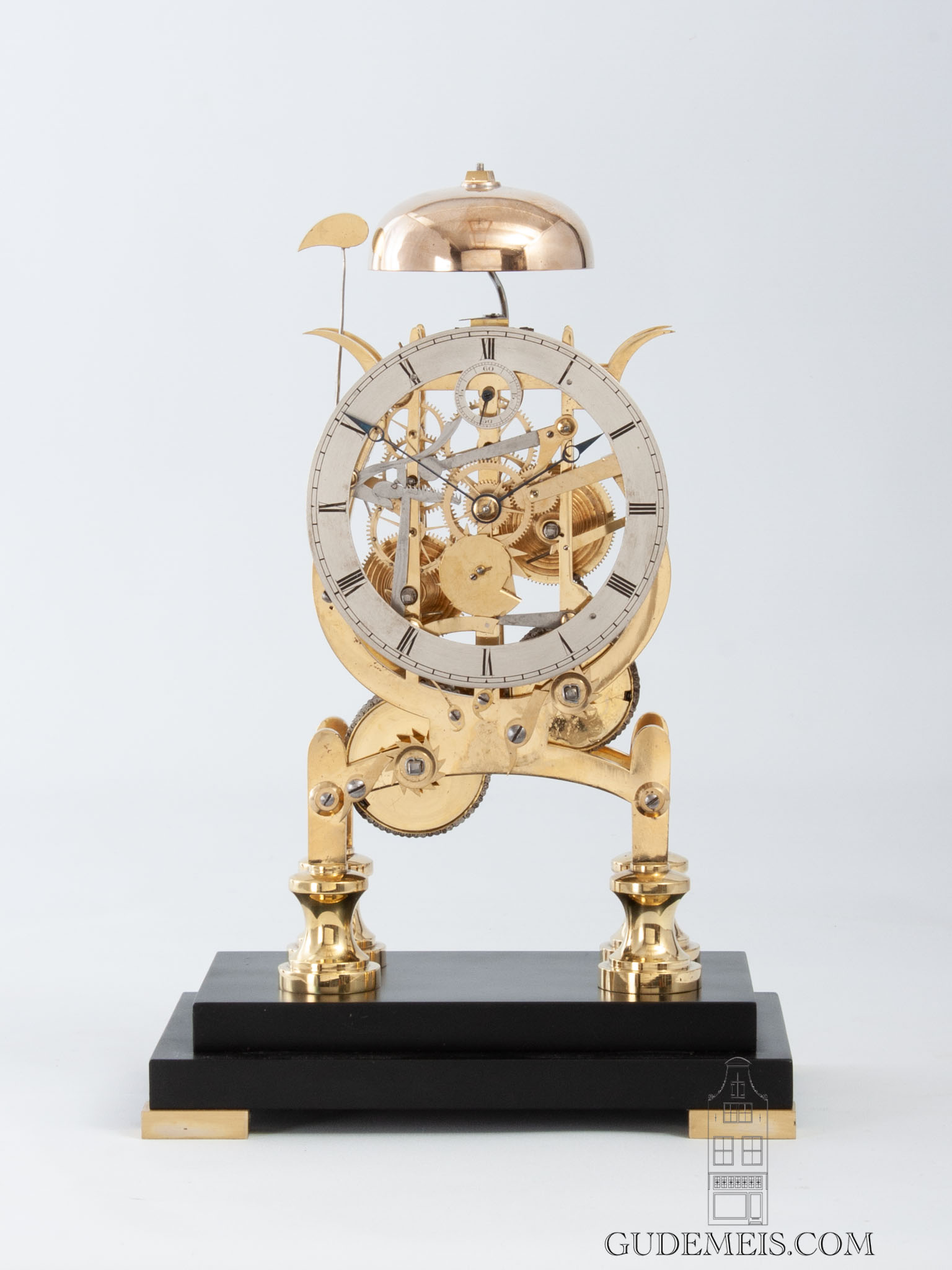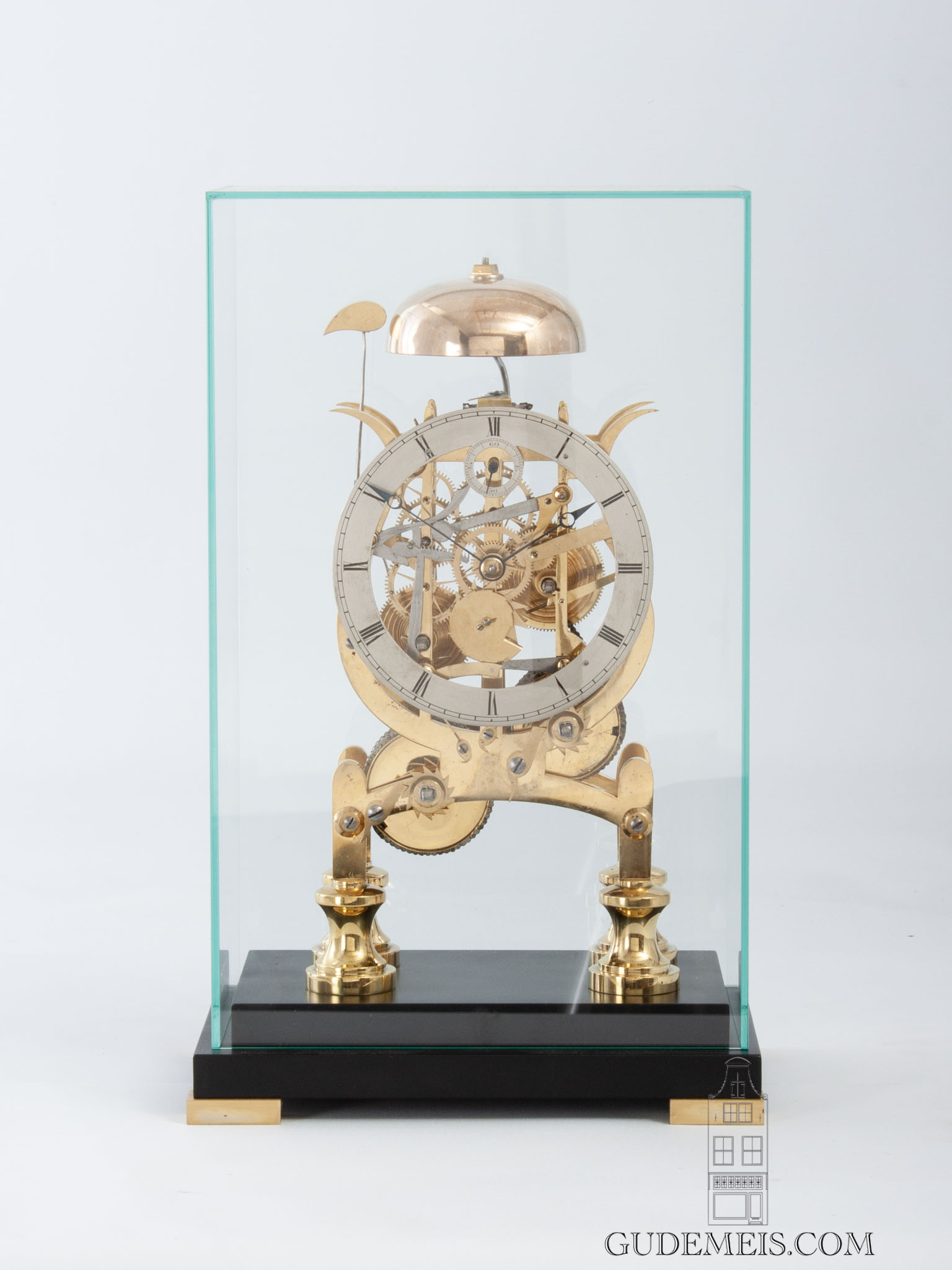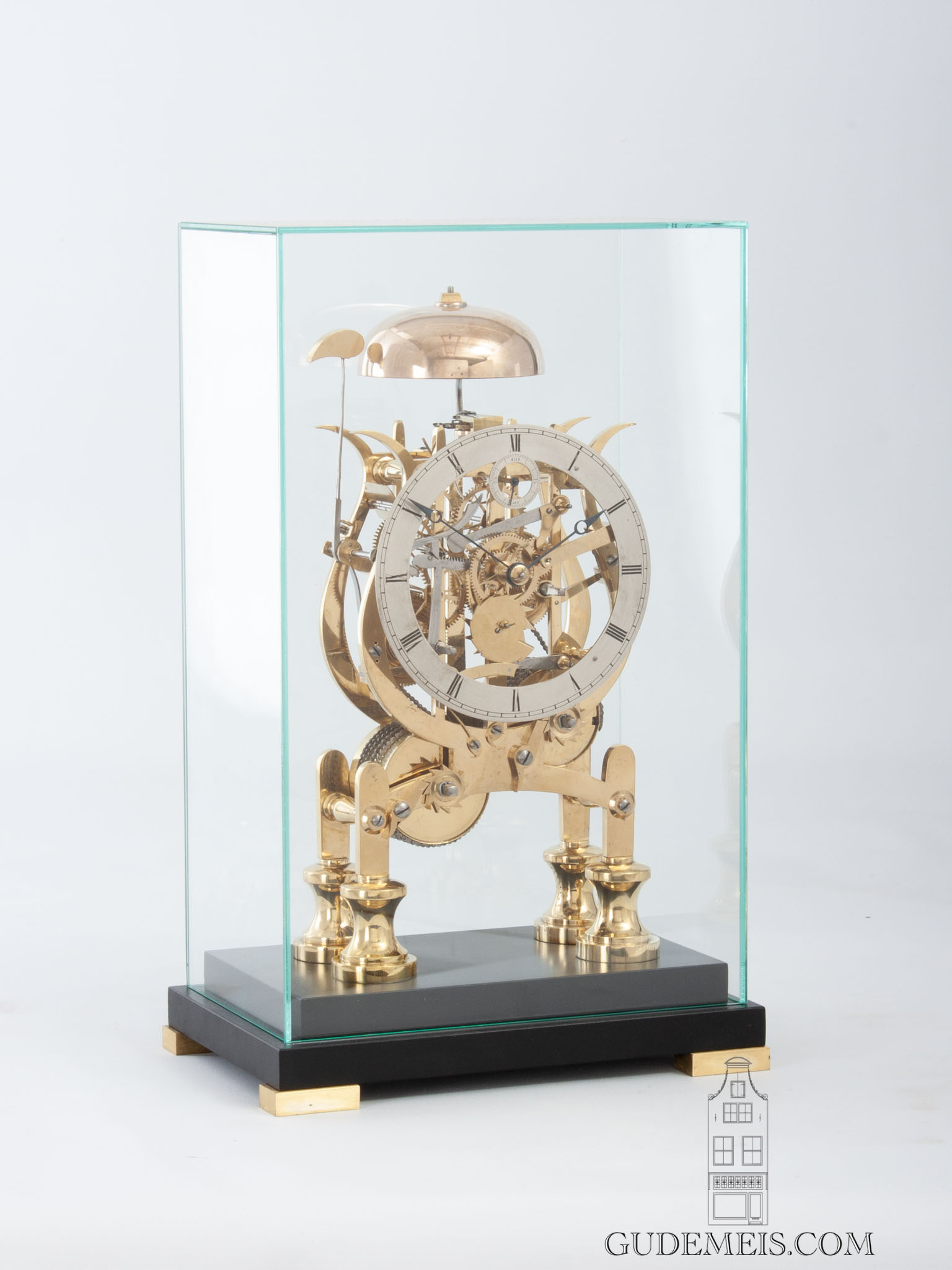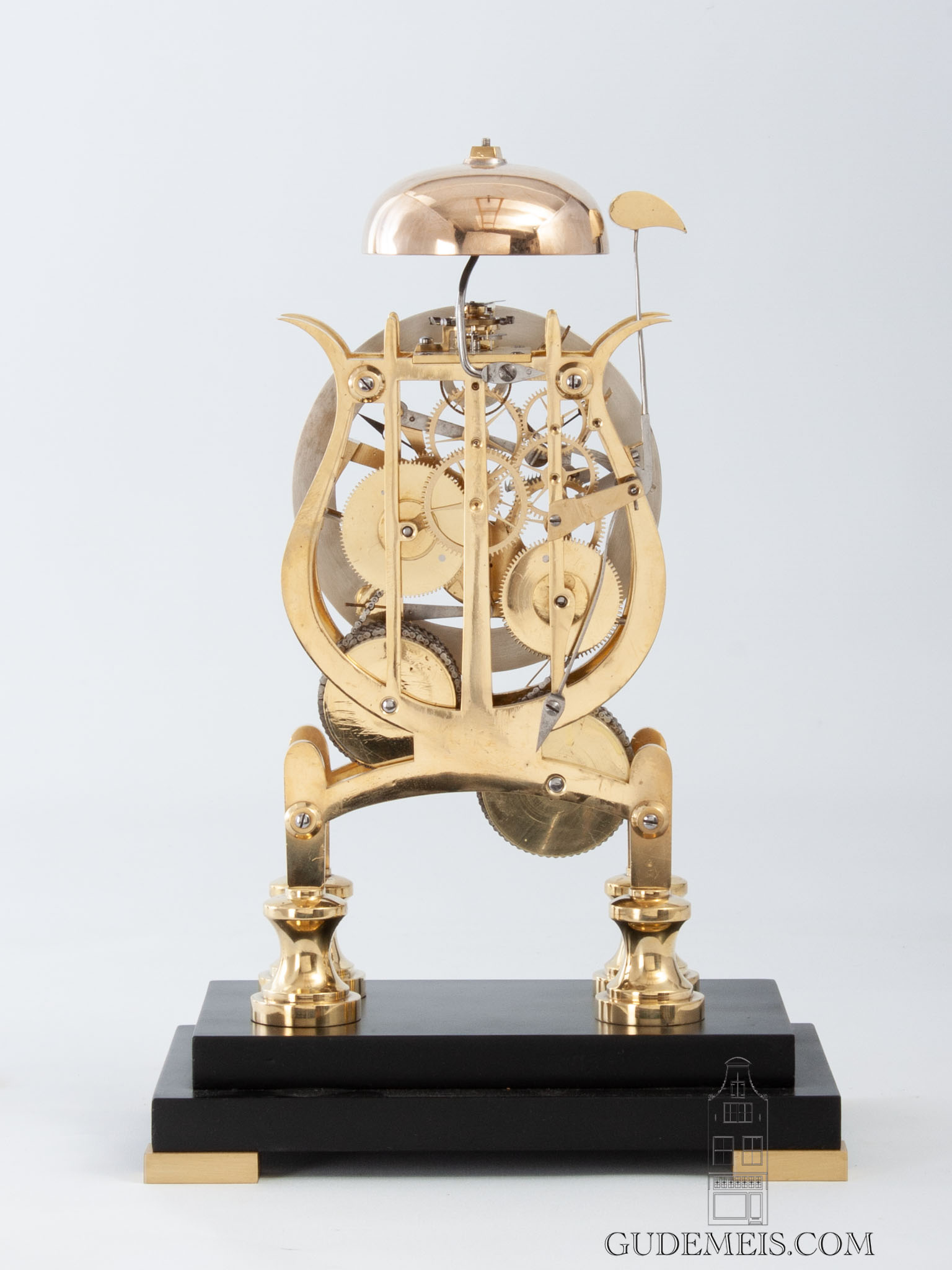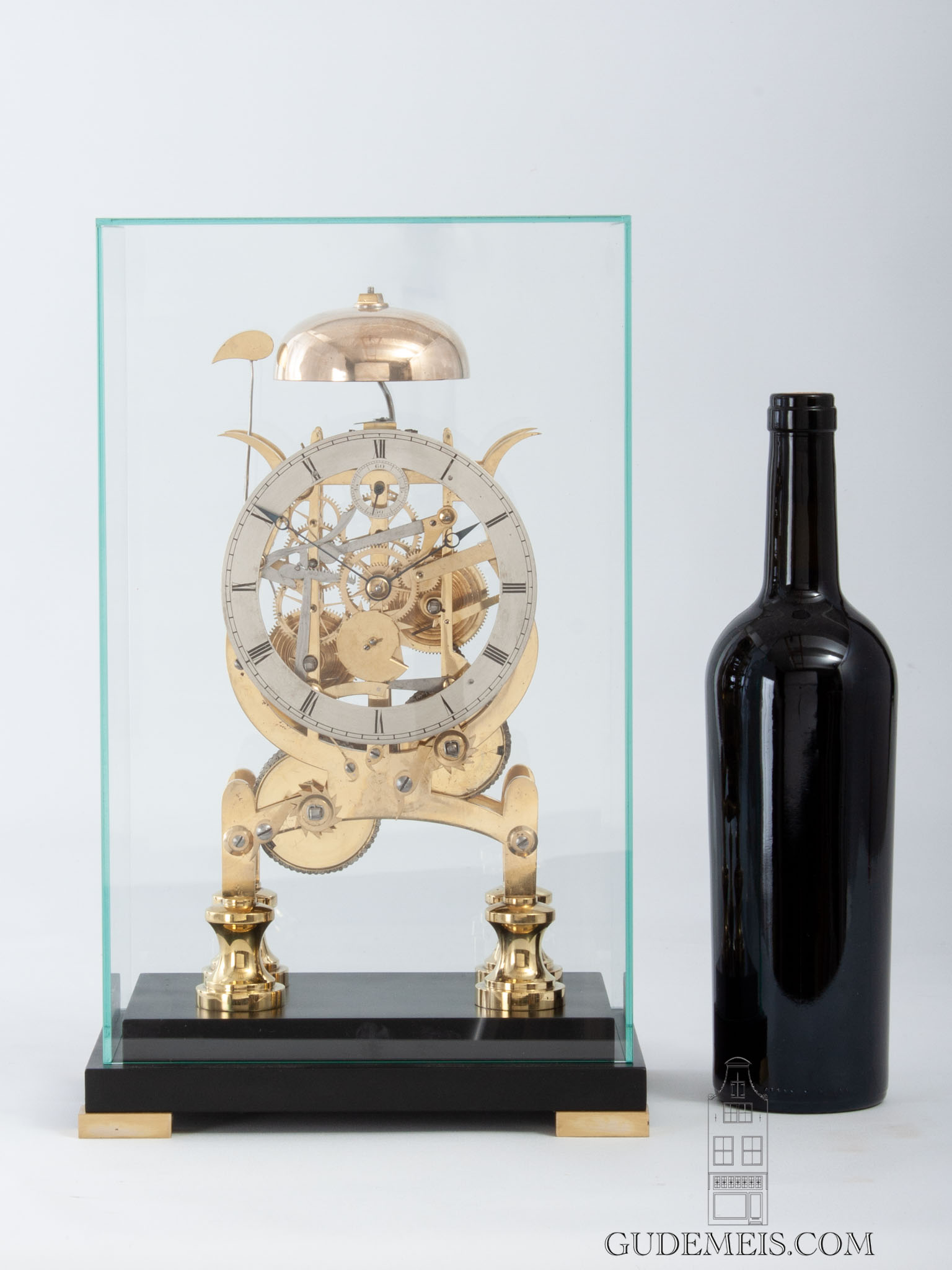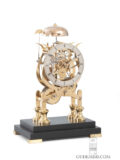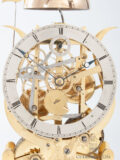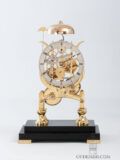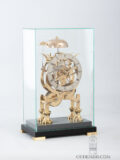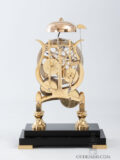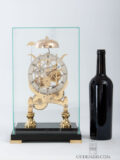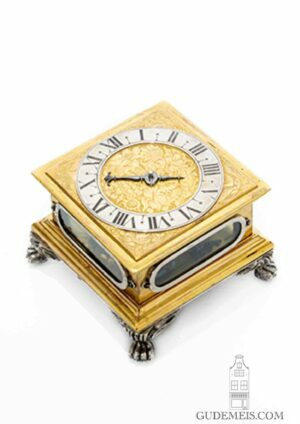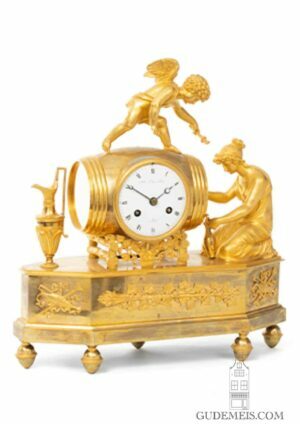An English brass striking skeleton clock, attr. E.J. Dent, circa 1840.
Description
Skeleton clocks
In France the type already existed already in another shape but around 1825 starts the production of skeleton clocks. These lack cases and have movements with cut-out plates being the decorative and fascinating element. Similar to table clocks, the movements are executed with fusee and chain. The fusee compensates for the loss of power of an unwinding spring by engaging more and more on the wider part of the conical axis. The first generation of skeleton clocks (1825 – 1845)is characterized by the rounded plain frames and slender unadorned chapter rings. The second generation (1845-1865) has more architectonal frames often shaped as churches and more decorated shaped chapter rings. The last generation consist mostly of very ornate foliate shaped frames with skeletonized chapter rings (1865- 1910). The production is small in the earlier years but becomes exponentially bigger with each period. By far, most skeleton clocks are made with a single train of wheels only for telling time. This particular clock has also a second wheel train for the striking work and furthermore has a rare platform lever escapement. This lyre-shaped model is known to have been made by Edward John Dent. The typical frame in combination with the rare lever escapement makes it plausible that this clock was made by the famous London maker.
Subsidiary seconds
The 12.8-cm engraved silvered chapter ring has Roman numerals with subsidiary seconds below XII. The Breguet hands are made of blued steel.
Fusee and chain
The movement is driven by two spring barrels with fusee and chain. It is regulated by a platform lever escapement with bi-metallic balance. The clock strikes the hours on a bell by means of rack striking.
Brass frame
The heavy brass frame has the shape of a classical lyre. It is placed on turned supports mounted on a rectangular stepped base under a glass dome.
In both ‘Skeleton Clocks’ by Royer-Collard (p. 148) and ‘British Skeleton Clocks by Derek Roberts (p. 124-125) clocks with identical frames are depicted and signed by Dent Cockspur St. London.
